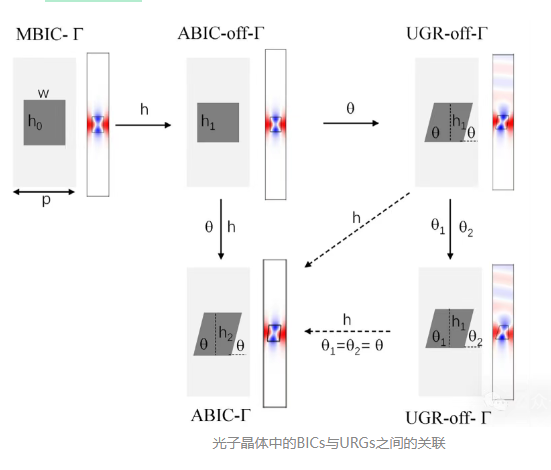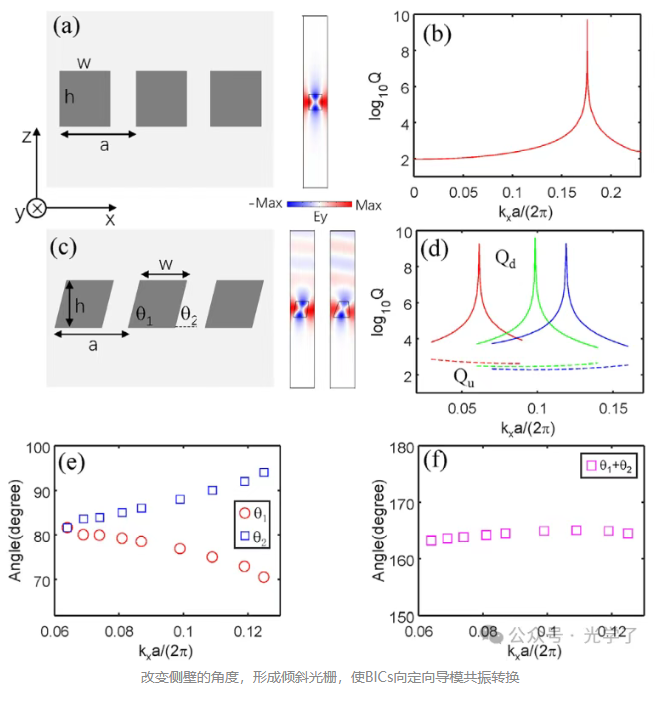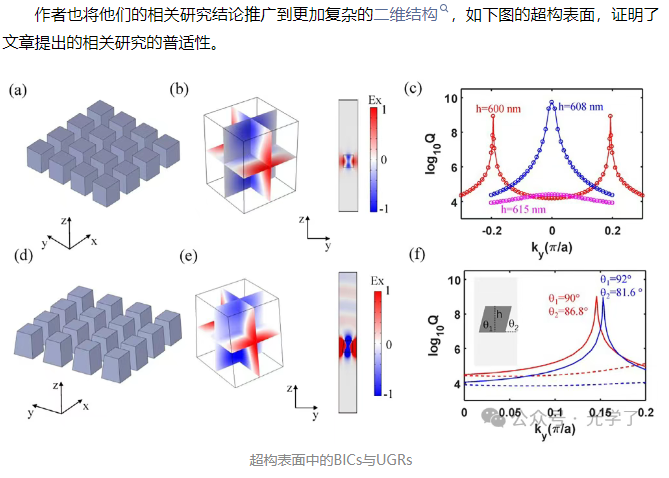Chongfan Technology
News
26
2025
-
05
Evolution of topological polarization singularities in photonic crystals, and the potential relationships among merging BICs, accidental BICs, and UGRs.
Author:
Topological defects in topological photonics have been extensively studied because they are beneficial for exploring physical nature and effectively controlling the propagation of electromagnetic waves 。
Polarization singularities are regarded as topological defects in momentum space . A bound state in the continuum (BIC) is a polarization singularity, and also a topological defect in momentum space, with an integer topological charge. Unidirectional guided resonances (UGRs) are also a type of polarization singularity.
The understanding of BIC and UGRs also stems from the perspective of multipole scattering. COMSOL calculations for multipole decomposition of one-dimensional periodic structure scattering
Recently published in Laser photonics review An article reveals the inherent connection between accidental BICs, merged BICs, and unidirectional guided resonances. The article points out that unidirectional guided resonances in tilted gratings originate from merged BICs with a topological charge q=0 at a specific thickness.
 Two BICs with opposite topological charges merge, and by controlling the angle of the grating sidewalls, the bound state can be converted to unidirectional guided resonances. Meanwhile, studies have shown that the sum of the angles of the two sidewalls is essentially constant when unidirectional guided resonances occur . Studies also show that adjusting the grating thickness can transform unidirectional guided resonances into accidental BICs.
Two BICs with opposite topological charges merge, and by controlling the angle of the grating sidewalls, the bound state can be converted to unidirectional guided resonances. Meanwhile, studies have shown that the sum of the angles of the two sidewalls is essentially constant when unidirectional guided resonances occur . Studies also show that adjusting the grating thickness can transform unidirectional guided resonances into accidental BICs.

By changing the angle of the sidewalls of a one-dimensional photonic crystal, i.e., the angle of the tilted grating, the conversion from merged BICs to unidirectional guided resonances can be achieved. It can be seen that the unidirectional guided resonances of tilted gratings evolve from merged BICs; the study, by changing the angle of the sidewalls, found that when unidirectional guided resonances are achieved, the sum of the two sidewall angles is close to a constant value which provides a new design dimension for the design of unidirectional guided resonance devices.


This research clarifies the inherent relationship between merged BICs, accidental BICs, and UGRs in photonic crystal slabs . It expounds on the evolution process from merged BICs to accidental BICs, and then to UGRs, as well as the relevant conditions, such as changing the grating thickness and introducing sidewall tilt angles which provides a theoretical basis for designing photonic crystal structures. Furthermore, the discovery that the sum of the tilt angles remains constant provides a convenient method for quickly finding UGRs, which has practical application value. The close correlation between these optical phenomena and these inherent relationships have potential application value in the fields of photonic crystal structure design and light manipulation.
LATEST NEWS
Thank you for visiting the official website of Chongfan Technology. If you have cooperation intentions or suggestions, please contact us through the following methods, and we will reply as soon as possible, thank you!
Address: Room 403, Building 6, Phase III of R&D, No. 36 Xiyong Avenue, High tech Zone, Chongqing, China.
Telephone: +86-13658337211
E-mail: Sales@cfkeji.net
Website: www.cfkeji.net
Mobile Version

